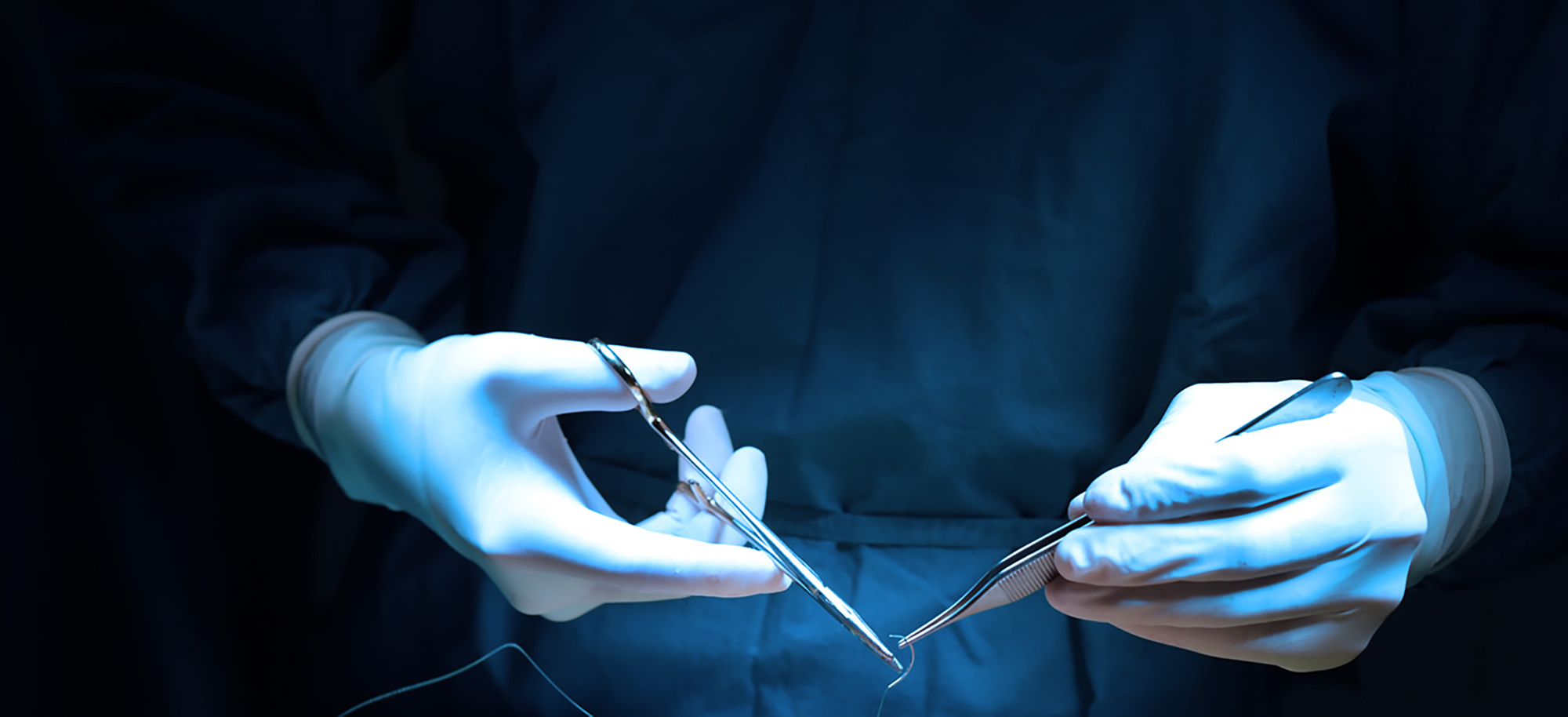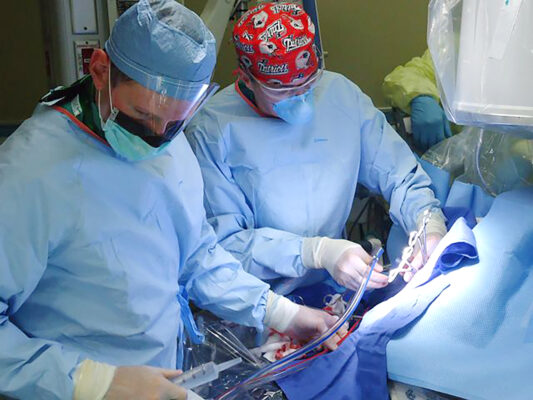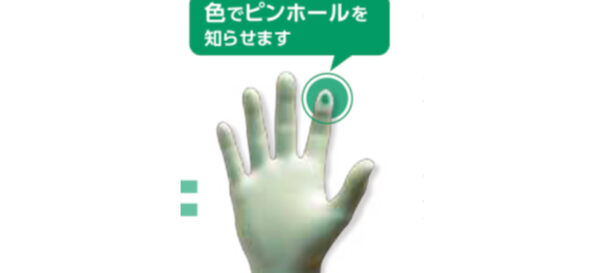An increasing number of facilities are actively working to prevent surgical site infections (SSI). Manuals are prepared at each facility in line with the guidelines for surgical infection control, and safe surgical care is promoted. However, in reality, it is said that the recommended intraoperative facial protection and double gloves are not always worn at a high rate. We explored what kind of measures should be taken to realize safe surgical treatment.

Hand washing during surgery is one of the important factors to prevent infection at the surgical site, and it is to remove the skin flora and reduce the amount of indigenous skin bacteria as much as possible. The aim is to minimize the risk of indigenous bacteria contamination of the surgical field even if the gloves are damaged during surgery. Indigenous bacteria usually do not cause infection, but they can cause infection in invasive procedures such as surgery and when patients are immunocompromised. Thorough hand washing is required to reduce.
As a hand-washing method, many facilities adopt a method (rubbing) of rubbing an alcohol-rubbing preparation after removing stains with soap and running water. This is the method recommended by the CDC Hand Hygiene Guidelines (2002). In other words, alcohol disinfection is important, not so much about hand washing in advance. It has been confirmed that this method does not significantly differ in the surgical site infection rate even when compared with hand washing with an antibacterial scrubbing agent using a brush. There is also an advantage in terms of cost. In Japan, it has been common for many years to wash hands during surgery by rubbing them up to the elbows with a brush and a scrubbing agent for disinfection.
At each facility, it is necessary to set up a manual for hand-washing methods based on the latest evidence and ensure that everyone implements it.
In 2002, a female surgeon who assisted in breast cancer surgery was infected with the hepatitis C virus when the blood of a patient scattered during the operation got into her eyes. The child born by this female surgeon also had hepatitis C. This is why facial protective equipment (pictured) such as goggles, protective glasses, and face shields are needed to protect the eyes of medical personnel from scattered blood. However, in clinical practice, it is said that the wearing rate of facial protective equipment during surgery is extremely low due to reasons such as "the lens becomes cloudy", "the lens is poorly transparent and difficult to see", and "the frame is not comfortable to wear". According to the survey results released by the Occupational Infection Control Study Group in 2013, the introduction rate of facial protective equipment was high at 98.6%, but the actual wearing rate was extremely low at 2.9%.
One of the countermeasures is to reduce the barriers to wearing as much as possible, such as by introducing a lens product with a high transparency that does not fog. It is also desirable to increase the choices so that each individual can choose the one that is easy to use. In other words, it can be said that the point is to create an environment where each person can wear face protection equipment that suits them. During surgery, it is recommended that all surgical surgeons, anesthesiologists, nurses, clinical engineers, etc. wear facial protective equipment and encourage visitors to wear it. It is also indispensable to always complain that "face protection is necessary as a measure to prevent occupational infections".
The importance of double gloves has been pointed out from the viewpoint of occupational infection and SSI prevention. In the surgical scene, surgical gloves are easily pierced with a sharp instrument such as a scalpel. Regarding the quality of surgical gloves, JIS standards allow pinhole defects of up to 1.5%. Therefore, even if no obvious damage is found on the surgical gloves during the operation, there is a possibility that the damage is invisible and difficult to notice. Perforations in gloves increase the incidence of SSI. It also increases the risk of exposure to the patient's body fluids and blood.
As a type of gloves, natural rubber gloves have an excellent fit due to their soft touch and high elasticity. However, the number of healthcare professionals with latex allergies due to the proteins contained in the material has increased in recent years. Synthetic rubber gloves are inferior to natural rubber gloves, but they have a high wearing feeling and can be used without worrying about latex allergy. It tends to be a little expensive. Although plastic gloves are inferior to the gloves mentioned above, there are few cases of allergies and they are used in the field where a high wearing feeling is unnecessary.
According to the "Revised 2013 Guidelines for Practical Guidelines for Surgical Medicine" of the Japanese Society of Surgical Medicine, "double gloves are recommended to prevent contamination of the surgical field and prevent occupational infections." The CDC's "Guidelines for Prevention of Surgical Site Infection 1999" also mentions the effectiveness of double-wearing.
According to the "Hospital Infection Control Guidelines Revised 2nd Edition" by the National and Public University Hospital Infection Control Council, it is desirable to wear double surgical gloves, and the use of indicator gloves of different colors inside and outside is also considered. " Has been done. Wearing gloves of different colors on the inside and outside has the advantage of making it easier to notice perforations due to the difference in color. Moisture enters between the inner and outer gloves due to the perforation, causing the gloves to come into close contact, and the color of the inner gloves is highlighted and appears to bleed (Fig.). Since the gloves are double-worn, the cost is higher than using one glove, but considering the treatment cost when SSI occurs, it seems to have a medical economic advantage. Some facilities change gloves every few hours.
It is useful to use disposable absorbent sheets to prevent contamination of the operating room, etc., which is expected to be contaminated. It is laid under the patient's body during surgery, endoscopy, and wound cleaning. It efficiently absorbs water such as body fluids, disinfectants, and excrement, and helps control infection. Sheets are often made of polymer-absorbing material, and the surface is dry and non-greasy even after absorbing water. Since the operating room is less likely to get dirty, cleaning after surgery becomes easier, which is said to help increase the number of rotations of the operating room.
Photo. Face protection to avoid exposure risk

Figure 1. Indicator gloves that indicate pinholes in color

Compared to the double wearing of normal surgical gloves, the double wearing with indicator gloves on the inside is said to have a higher pinhole awareness rate during surgery.
Figure 2. Applications for absorbent sheets
